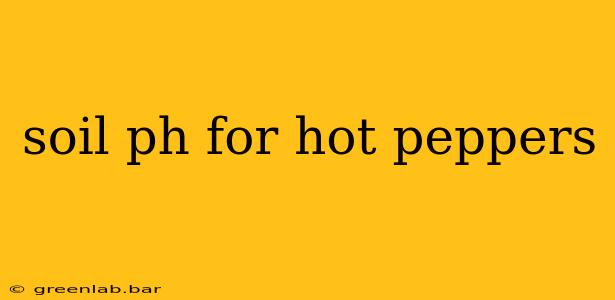Hot peppers, with their fiery kick and vibrant colors, are a rewarding addition to any garden. However, achieving a bountiful harvest of these spicy delights requires understanding their specific needs, particularly regarding soil pH. Getting the soil pH right is crucial for optimal nutrient uptake and overall plant health. This guide delves into the ideal soil pH range for hot peppers, explaining why it matters and how to achieve the perfect balance for a scorching harvest.
Understanding Soil pH and its Impact on Hot Peppers
Soil pH measures the acidity or alkalinity of your soil, expressed on a scale of 0 to 14. A pH of 7 is neutral, while values below 7 indicate acidity and values above 7 indicate alkalinity. Hot peppers thrive in a slightly acidic to neutral soil environment. Why is this so important?
-
Nutrient Availability: The pH level directly influences the availability of essential nutrients. Many nutrients, crucial for pepper growth, like phosphorus, iron, and manganese, become less available to the plant in highly alkaline or acidic soils. This nutrient deficiency can lead to stunted growth, poor fruit production, and a generally unhealthy plant.
-
Microbial Activity: Soil pH affects the activity of beneficial soil microbes. These microbes play a vital role in nutrient cycling and disease suppression. An optimal pH level ensures a thriving microbial community, further boosting plant health and resilience.
-
Root Development: Healthy root systems are essential for nutrient and water uptake. Extreme pH levels can hinder root development, leading to reduced nutrient absorption and increased vulnerability to drought stress.
The Ideal Soil pH for Hot Peppers: Striking the Right Balance
The ideal soil pH range for most hot pepper varieties is between 6.0 and 7.0. While a slight variation outside this range might not drastically impact your crop, staying within this window ensures optimal nutrient availability and plant health. A pH level below 6.0 can lead to nutrient deficiencies (especially iron and manganese), while a pH above 7.0 can cause problems with phosphorus and other micronutrients.
Testing Your Soil pH: A Crucial First Step
Before planting your hot peppers, it’s essential to test your soil pH. You can purchase affordable soil testing kits from most garden centers or online retailers. These kits provide simple instructions for accurately determining your soil's pH.
Adjusting Your Soil pH: Achieving the Sweet Spot
If your soil pH falls outside the ideal range of 6.0 to 7.0, you can adjust it to create a more suitable environment for your hot peppers.
-
Lowering pH (for alkaline soils): To lower the pH (increase acidity), you can amend your soil with organic matter like peat moss, compost, or elemental sulfur. These materials gradually acidify the soil over time.
-
Raising pH (for acidic soils): To raise the pH (reduce acidity), you can incorporate agricultural lime into your soil. Lime is a readily available and effective way to increase the alkalinity of your soil.
Remember to always follow the instructions on the packaging of any soil amendments. It's crucial not to over-amend, as this can have detrimental effects on your soil and plants. You might need to conduct further soil tests after amending to ensure you've reached the desired pH level.
Beyond Soil pH: Other Factors for a Successful Hot Pepper Harvest
While soil pH is critical, remember that it’s only one piece of the puzzle. Other crucial factors for a thriving hot pepper crop include:
- Sunlight: Hot peppers need at least 6-8 hours of direct sunlight daily.
- Water: Consistent watering is essential, but avoid overwatering, which can lead to root rot.
- Nutrients: Provide balanced fertilization using a fertilizer specifically formulated for peppers.
- Well-Draining Soil: Ensure your soil drains well to prevent waterlogging.
By carefully managing your soil pH and attending to these other critical factors, you'll significantly increase your chances of cultivating a spectacular harvest of flavorful and fiery hot peppers. Remember to always monitor your soil throughout the growing season, making adjustments as needed to keep your plants thriving.

